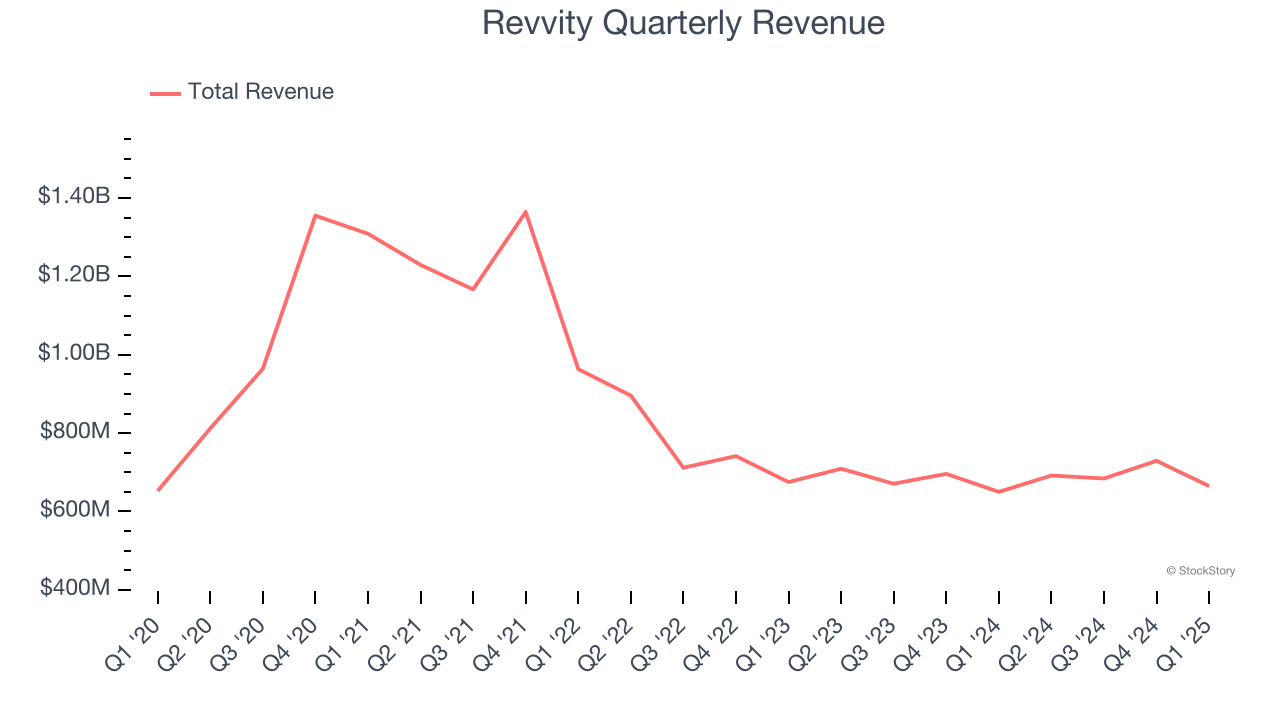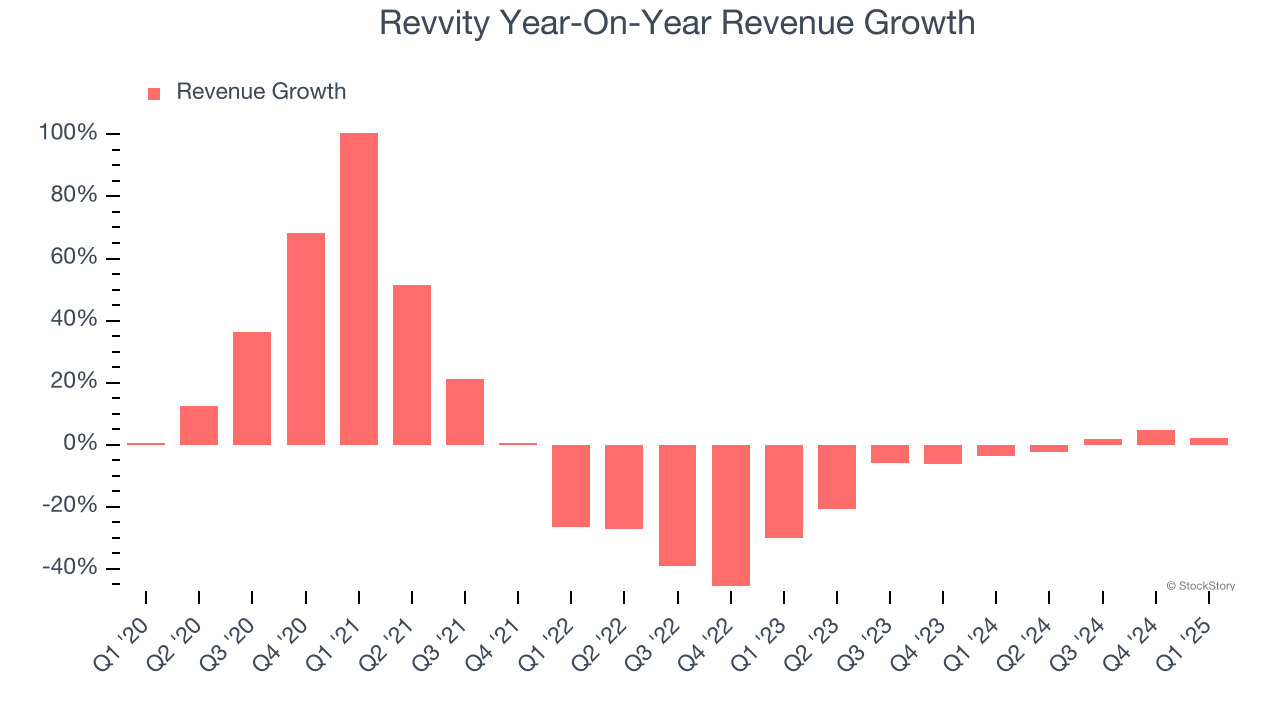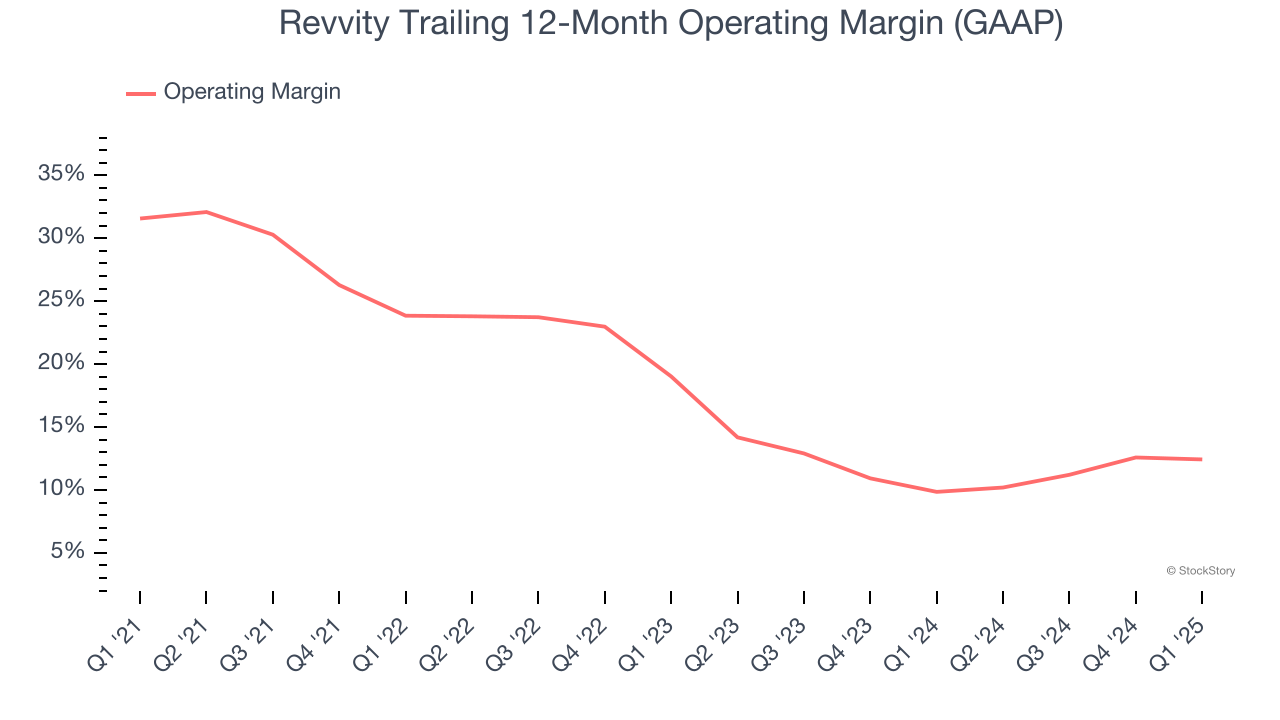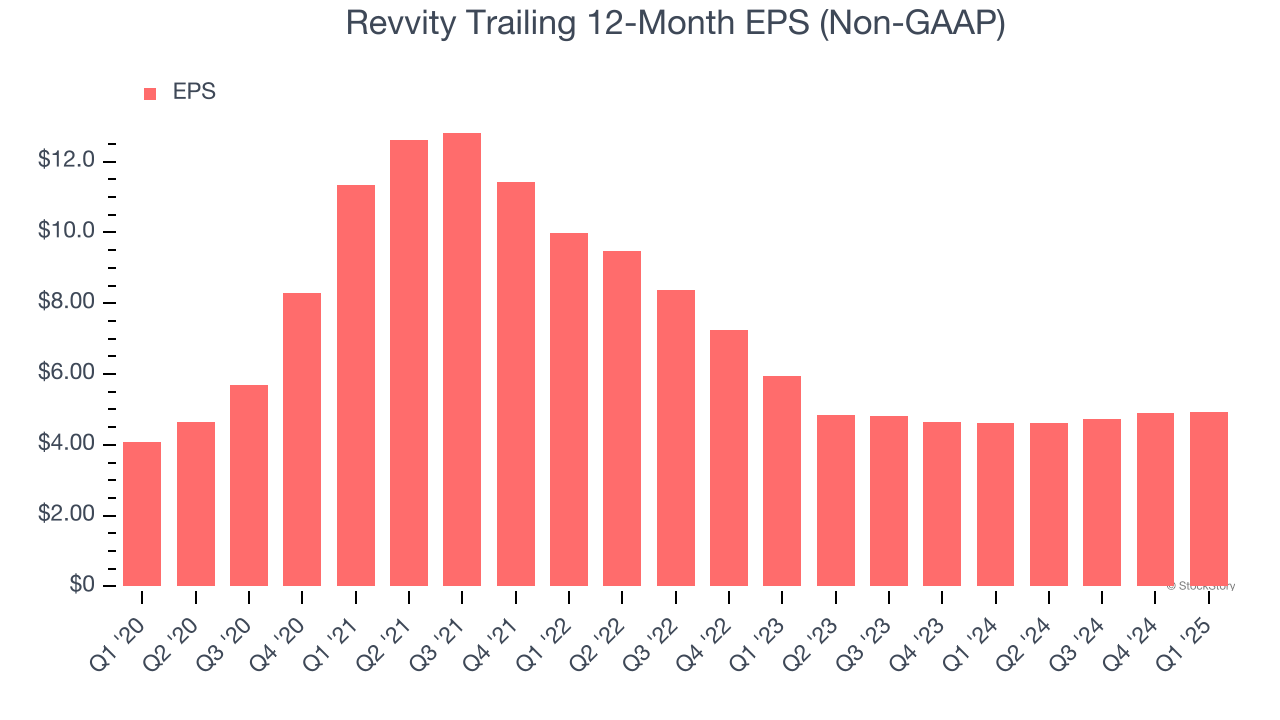
Life sciences company Revvity (NYSE: RVTY) announced better-than-expected revenue in Q1 CY2025, with sales up 2.3% year on year to $664.8 million. The company’s full-year revenue guidance of $2.85 billion at the midpoint came in 0.6% above analysts’ estimates. Its non-GAAP profit of $1.01 per share was 6.4% above analysts’ consensus estimates.
Is now the time to buy Revvity? Find out by accessing our full research report, it’s free.
Revvity (RVTY) Q1 CY2025 Highlights:
- Revenue: $664.8 million vs analyst estimates of $660.6 million (2.3% year-on-year growth, 0.6% beat)
- Adjusted EPS: $1.01 vs analyst estimates of $0.95 (6.4% beat)
- Adjusted EBITDA: $146.8 million vs analyst estimates of $189.8 million (22.1% margin, 22.6% miss)
- The company slightly lifted its revenue guidance for the full year to $2.85 billion at the midpoint from $2.83 billion
- Management reiterated its full-year Adjusted EPS guidance of $4.95 at the midpoint
- Operating Margin: 6.3%, in line with the same quarter last year
- Free Cash Flow Margin: 16.9%, down from 20% in the same quarter last year
- Organic Revenue rose 4% year on year (-3% in the same quarter last year)
- Market Capitalization: $11.33 billion
“Revvity navigated a dynamic environment and delivered strong first quarter results,” said Prahlad Singh, president and chief executive officer of Revvity.
Company Overview
Formerly known as PerkinElmer until its rebranding in 2023, Revvity (NYSE: RVTY) provides health science technologies and services that support the complete workflow from discovery to development and diagnosis to cure.
Research Tools & Consumables
The life sciences subsector specializing in research tools and consumables enables scientific discoveries across academia, biotechnology, and pharmaceuticals. These firms supply a wide range of essential laboratory products, ensuring a recurring revenue stream through repeat purchases and replenishment. Their business models benefit from strong customer loyalty, a diversified product portfolio, and exposure to both the research and clinical markets. However, challenges include high R&D investment to maintain technological leadership, pricing pressures from budget-conscious institutions, and vulnerability to fluctuations in research funding cycles. Looking ahead, this subsector stands to benefit from tailwinds such as growing demand for tools supporting emerging fields like synthetic biology and personalized medicine. There is also a rise in automation and AI-driven solutions in laboratories that could create new opportunities to sell tools and consumables. Nevertheless, headwinds exist. These companies tend to be at the mercy of supply chain disruptions and sensitivity to macroeconomic conditions that impact funding for research initiatives.
Sales Growth
A company’s long-term sales performance can indicate its overall quality. Any business can put up a good quarter or two, but many enduring ones grow for years. Unfortunately, Revvity struggled to consistently increase demand as its $2.77 billion of sales for the trailing 12 months was close to its revenue five years ago. This was below our standards and is a sign of poor business quality.

Long-term growth is the most important, but within healthcare, a half-decade historical view may miss new innovations or demand cycles. Revvity’s recent performance shows its demand remained suppressed as its revenue has declined by 4.3% annually over the last two years. 
We can dig further into the company’s sales dynamics by analyzing its organic revenue, which strips out one-time events like acquisitions and currency fluctuations that don’t accurately reflect its fundamentals. Over the last two years, Revvity’s organic revenue averaged 3.4% year-on-year declines. Because this number aligns with its normal revenue growth, we can see the company’s core operations (not acquisitions and divestitures) drove most of its results. 
This quarter, Revvity reported modest year-on-year revenue growth of 2.3% but beat Wall Street’s estimates by 0.6%.
Looking ahead, sell-side analysts expect revenue to grow 3.4% over the next 12 months. Although this projection indicates its newer products and services will fuel better top-line performance, it is still below the sector average.
Software is eating the world and there is virtually no industry left that has been untouched by it. That drives increasing demand for tools helping software developers do their jobs, whether it be monitoring critical cloud infrastructure, integrating audio and video functionality, or ensuring smooth content streaming. Click here to access a free report on our 3 favorite stocks to play this generational megatrend.
Operating Margin
Operating margin is a key measure of profitability. Think of it as net income - the bottom line - excluding the impact of taxes and interest on debt, which are less connected to business fundamentals.
Revvity has been an efficient company over the last five years. It was one of the more profitable businesses in the healthcare sector, boasting an average operating margin of 21%.
Looking at the trend in its profitability, Revvity’s operating margin decreased by 19.1 percentage points over the last five years. The company’s two-year trajectory also shows it failed to get its profitability back to the peak as its margin fell by 6.6 percentage points. This performance was poor no matter how you look at it - it shows its expenses were rising and it couldn’t pass those costs onto its customers.

In Q1, Revvity generated an operating profit margin of 6.3%, in line with the same quarter last year. This indicates the company’s overall cost structure has been relatively stable.
Earnings Per Share
Revenue trends explain a company’s historical growth, but the long-term change in earnings per share (EPS) points to the profitability of that growth – for example, a company could inflate its sales through excessive spending on advertising and promotions.
Revvity’s EPS grew at an unimpressive 3.9% compounded annual growth rate over the last five years. This performance was better than its flat revenue, but we take it with a grain of salt because its operating margin didn’t expand and it didn’t repurchase its shares, meaning the delta came from reduced interest expenses or taxes.

In Q1, Revvity reported EPS at $1.01, up from $0.98 in the same quarter last year. This print beat analysts’ estimates by 6.4%. Over the next 12 months, Wall Street expects Revvity’s full-year EPS of $4.93 to grow 4.9%.
Key Takeaways from Revvity’s Q1 Results
It was encouraging to see Revvity beat analysts’ EPS expectations this quarter. We were also glad its full-year revenue guidance slightly exceeded Wall Street’s estimates. Overall, this quarter had some key positives. The stock traded up 4.7% to $98.73 immediately following the results.
So do we think Revvity is an attractive buy at the current price? What happened in the latest quarter matters, but not as much as longer-term business quality and valuation, when deciding whether to invest in this stock. We cover that in our actionable full research report which you can read here, it’s free.
